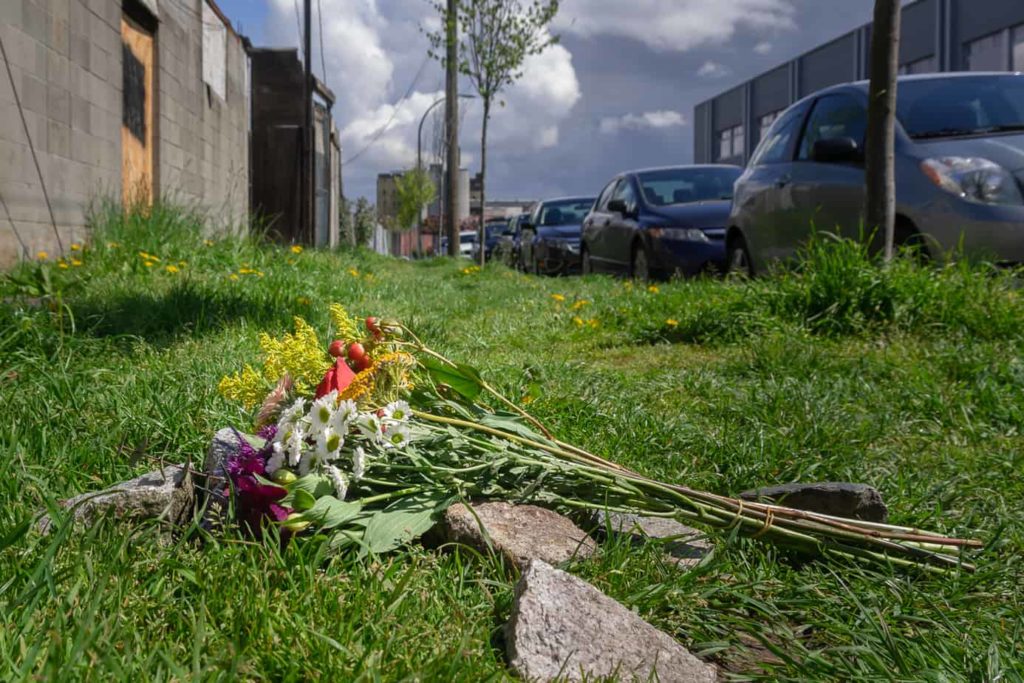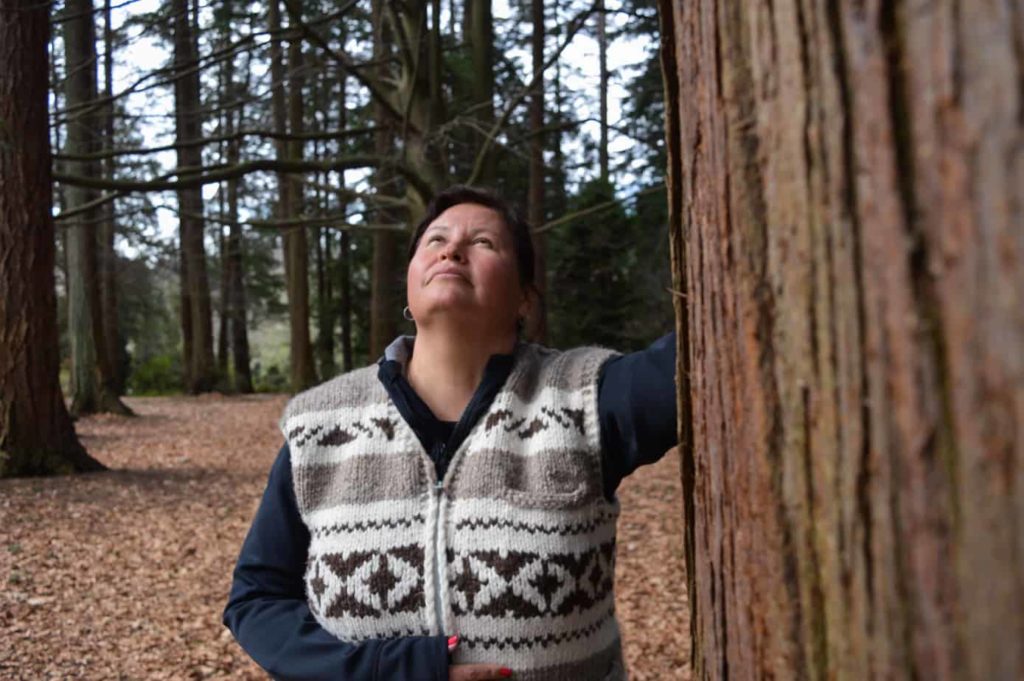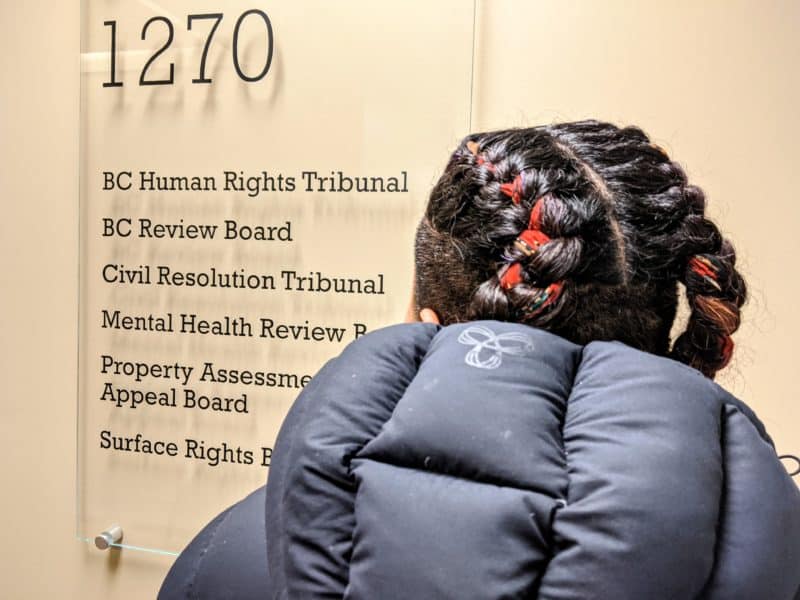
This is from our Urban Nation newsletter. You can subscribe here.
The throes of Vancouver’s opioid crisis hit home for me recently after I witnessed a woman die from an overdose on the city’s east side.
I was riding my bike to work up a rain-slicked side street after leaving my gym one morning two weeks ago. When I neared an industrial area by the railroad tracks a few blocks from work, I saw the flashing lights of multiple emergency vehicles in front of a small grassy patch with tents on it.
Paramedics had just stood up and beneath them was a man kneeling on the ground. He was crouched over and hugging the prone body of a woman. He was screaming “No!” “Wake up!” and “Don’t leave” in a voice that sounded like it came from the earth’s core, in an angry-mournful tone that I’ve only heard emanate during times of death.
A Vancouver Police Department officer gently placed his hand on the man’s back and helped him up. As he stood, I saw the woman more clearly before a blanket was pulled over her face. I recognized her as one of the homeless people who frequent the block where I work.
In that moment Vancouver’s opioid crisis became more real to me, in a way that reading statistics just can’t capture.
The most recent overdose stats were reported in an April 14 city hall press release: more than 1,000 people have died of overdoses in Vancouver since 2016, and the number of drug-related deaths has increased here every year since 2014. Across the province, an average of 2.9 people a day are still dying from overdoses, the city noted.
I’ve known people who died from fentanyl overdoses, but this was different: I witnessed this one, and the immediate pain of a loved one left behind.
Throughout that week, I kept seeing emergency lights flashing and hearing squawking emergency radios. Mostly though, especially late at night, I could hear that guy crying.
I travelled to my hometown of Port Alberni where I had promised to help some teens in my First Nation with a project. But I also visited my nation’s cultural-use area in a remote part of town.
I couldn’t unsee or unhear what I’d witnessed. It was burned into my mind. But there, in the silence of the pristine wilderness by the lake where my ancestors once lived, the emergency lights I’d been seeing dimmed, the squawking radios faded and the man’s crying subsided.
Back in Vancouver, I cycled through the industrial area where the woman died, both to get a sense of closure and to pay my respects. The tents are gone now, the grassy patch is bare and you’d never know anyone lived, let alone died, there.
But I do.
People are talking about
- In this APTN story, Tina House tells the story of a Vancouver Indigenous woman who is choosing to treat her cancer with traditional medicine instead of radiation treatments.
- According to the Globe and Mail’s Western Canada newsletter, the Squamish First Nation plans to build housing at the south end of the Burrard Bridge in Vancouver.
- The Alberni Valley News reports that a Vancouver high school Indigenous athlete from the West Coast has won a Premier’s Award for Indigenous Youth Excellence in Sport.
- According to this Surrey Now-Leader story, non-Semiahmoo First Nation residents who declined to pay hook-up costs for new tribal water and sewer infrastructure now have to move.
What you love

What inspires Candace Campo is the dedication to community-building that she sees in the people all around her.
“What I love about our community — and what I continually aspire for and want to implement more in my life — is the actual practice of community,” she says.
Candace, who is Shíshálh and Squamish, sees the people around her dedicate time and effort to preserving the culture and closeness in her community. For her, that means families prioritizing time to attend cultural events and support one another.
“I really believe being a member of an Indigenous community, or Indigenous family, is to be very conscious of your community members around you, and to be supportive,” she says.
She says she sometimes looks at herself and wonders: “Am I doing enough to support the average family? Am I so immersed in my own life and my own business that I’m missing the goal to support community as a whole, to support parents as a whole?” she asks.
Candace and her husband own a small tour company called Talaysay Tours, which runs walking, hiking and boating tours out of Stanley Park, Squamish and the Sunshine Coast, focused on sharing the areas’ Indigenous history and culture. Though she sometimes struggles to balance community-building with the demands of owning and running a small business, she remains dedicated to playing her role in supporting the community she’s proud to be a part of.
“I think, to be honest, my fundamental role and responsibility as a woman, as a mother, it is my responsibility to look at and support the family,” she says.
“I think it’s too easy for us in today’s society to just carry on and focus on your own life and your own well-being, but I think if we keep moving in that direction, then we’re in trouble,” she adds.
Written by Cloe Logan
Let’s gather
- April 25: A new session of Cree and Ojibway language classes has begun, hosted by the Pacific Association of First Nations Women. Classes started on April 18 and will run for 10 weeks every Thursday at 6:30 p.m. The classes are open to Indigenous women, men and children over age six of Cree and Ojibway descent. Email indigenouswomenrise@pafnw.ca to register now.
- May 2: The Verses Festival of Words is hosting Talk the Talk: Decolonizing the Arts, a community anti-oppression dialogue guided by artists Nyla Carpentier and Melanie Mununggurr-Williams. Doors open at 12:30 p.m. at the Havana Theatre on Commercial Drive, and the free discussion starts at 1 p.m.
- May 2: The Broadway Youth Resource Centre’s Indigenous Youth Empowerment Program is hosting an Indigiqueer & Two Spirit Crafting Night with beading and traditional crafts for youth between the ages of 12 to 24. Drop in anytime between 4 to 7 p.m. Details here.
Compiled by Sean Murphy
If you know about an event that you think should be included in this newsletter next week, send us an email.
And if you like this newsletter, help us build this community by inviting your friends to subscribe. We value your feedback.[end]



